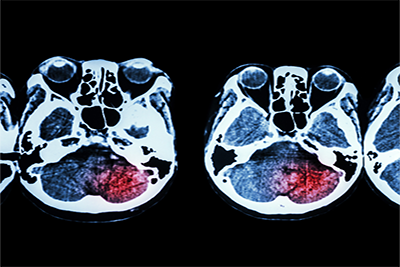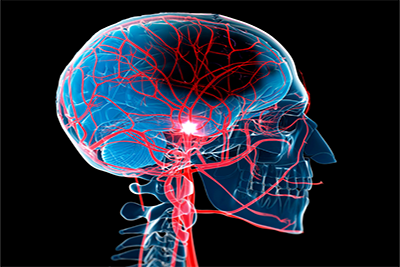Emergency Stroke Treatment: Time is Critical
Effective stroke treatment demands immediate action. Delays in diagnosis or treatment can cause devastating long-term disability or death. Once a stroke is diagnosed, doctors must act fast:
- tPA (a potent clot-busting drug) must be administered within 4.5 hours of symptom onset.
- Mechanical thrombectomy—a procedure that removes large vessel clots—must be performed within 24 hours.
Failure to meet these time-sensitive windows can result in preventable harm.
What Causes a Stroke?
There are two main types of strokes:
- Ischemic Stroke: Caused by a clot blocking blood flow to the brain. This accounts for over 80% of all strokes. Treatment includes:
- tPA for eligible patients within 4.5 hours of onset
- Thrombectomy for large vessel occlusions within 24 hours
- Both treatments carry a risk of bleeding complications
- Hemorrhagic Stroke: Occurs when an artery in the brain ruptures or leaks, creating pressure that damages brain cells.
- Transient Ischemic Attack (TIA or “mini-stroke”): Caused by a temporary blockage that usually resolves within minutes. TIAs are a warning sign. Follow-up testing may reveal narrowing of large arteries (e.g., carotid or middle cerebral), and early interventions like thrombectomy, angioplasty, or carotid endarterectomy may prevent future, catastrophic strokes.
Recognizing Stroke Symptoms
Immediate recognition of stroke symptoms is critical. Look for:
- Numbness or weakness in the face, arm, or leg—often on one side
- Facial drooping
- Slurred speech, confusion, or difficulty speaking
- Sudden, severe headache
- Loss of coordination or balance
- Vision loss or difficulty seeing in one or both eyes
Stroke Mismanagement & Legal Action
Too often, the early symptoms of a catastrophic ischemic stroke are missed, leading to a delay in diagnosis and treatment. The result is a lifetime disability and 24-hour care. At Vigna Law Group, we conduct a detailed review of each stroke case—including initial assessment, diagnostic tests, and all medical interventions provided—to determine whether mismanagement occurred.
We also evaluate every thrombectomy case for:
- Hemorrhagic complications
- Ischemic damage linked to defective devices, particularly the Penumbra Jet 7
Legal Advocacy for Stroke Victims
Dr. Greg Vigna, MD, JD—a board-certified physician in Physical Medicine and Rehabilitation and a national neurological injury attorney—leads our team. We are actively investigating injuries tied to the Penumbra Jet 7 and pursuing justice for patients harmed by its use.
If you or a loved one suffered complications from a stroke or stroke-related device, we are here to help. We’ll fight for accountability and the compensation you deserve.



